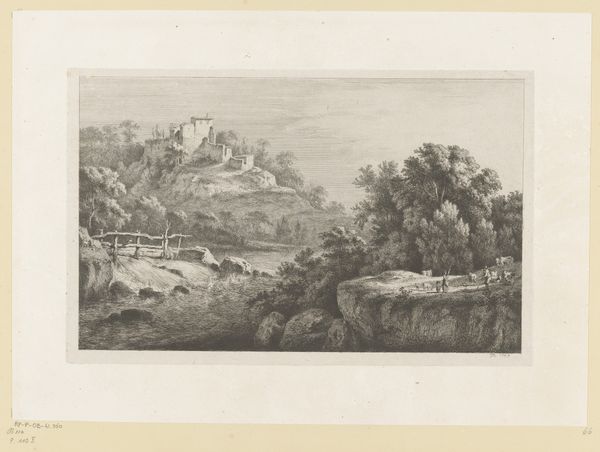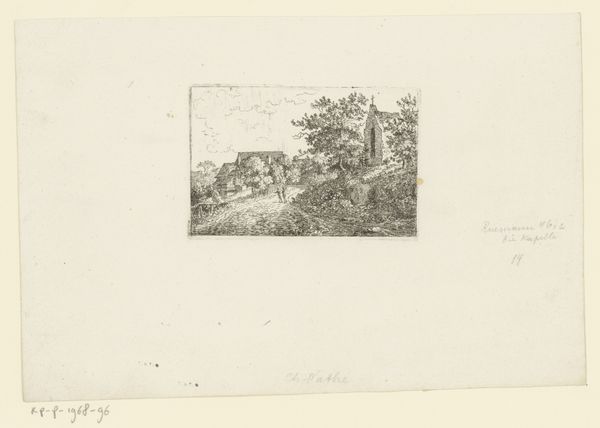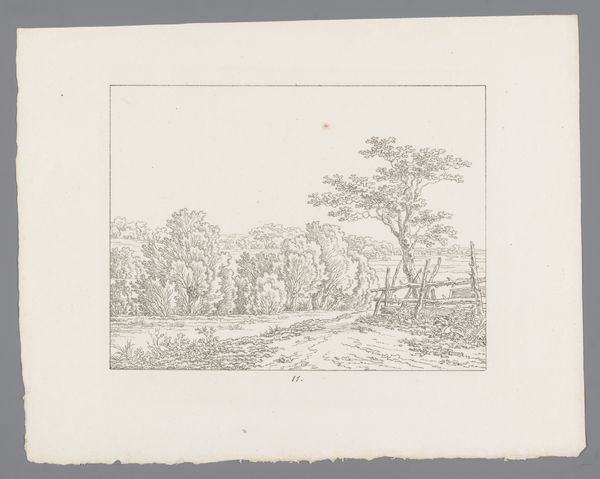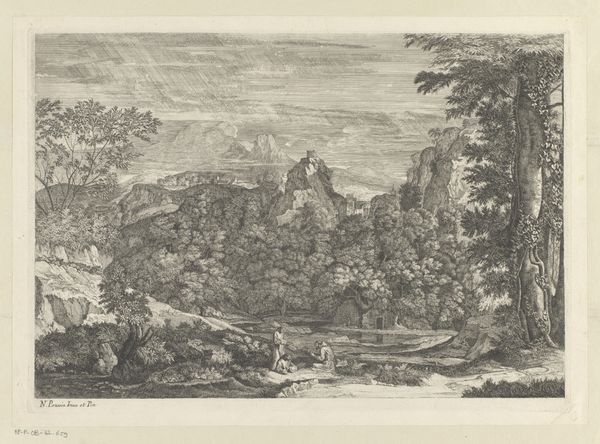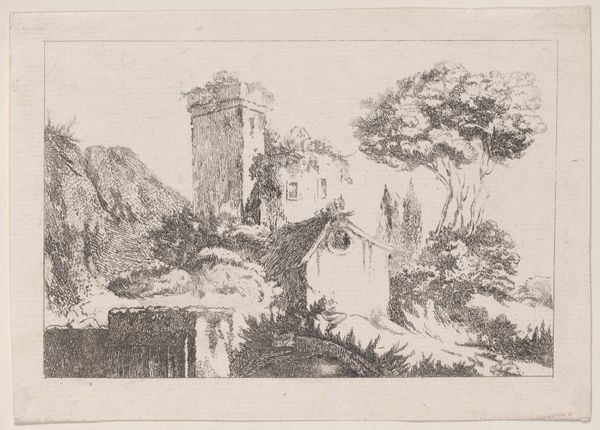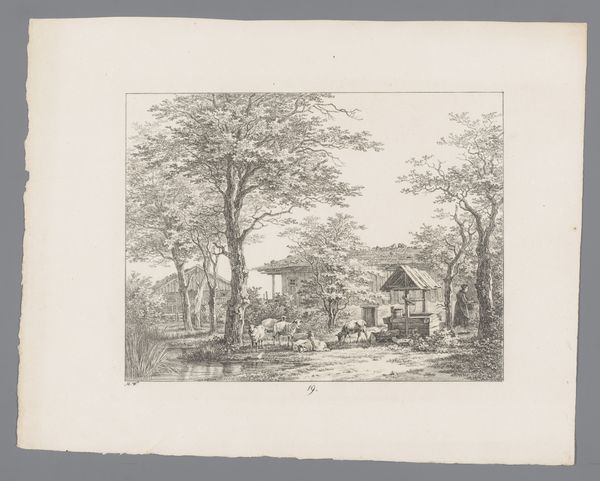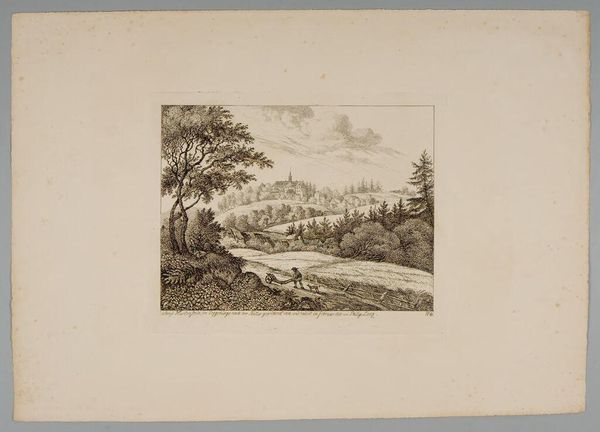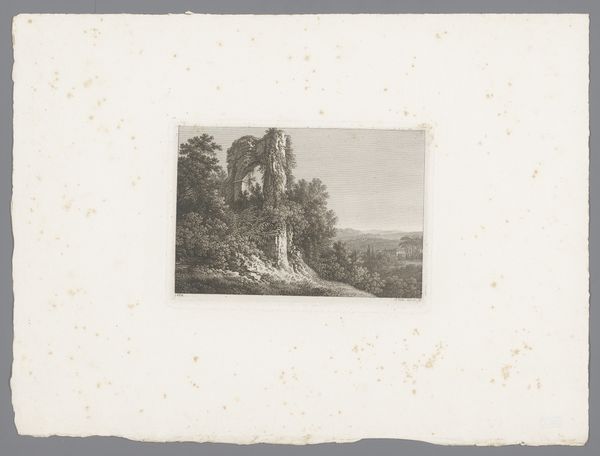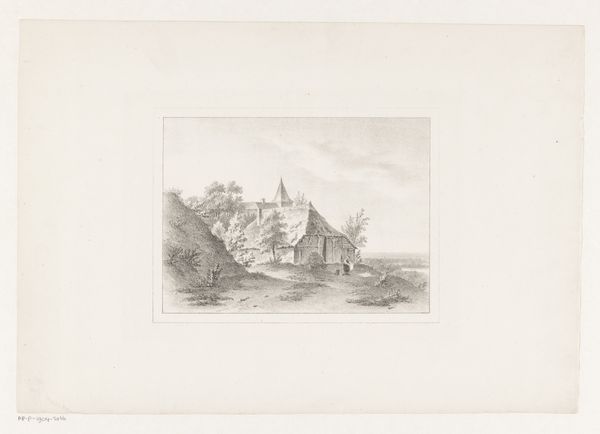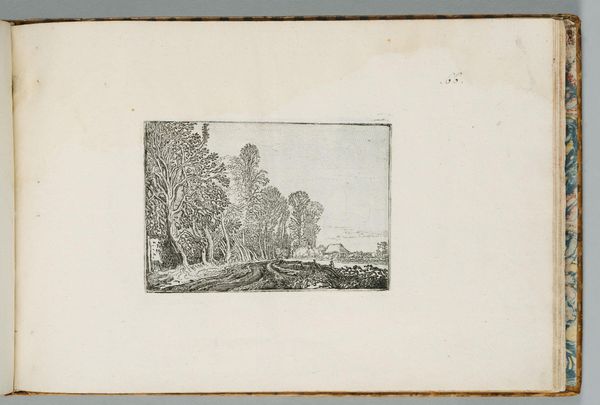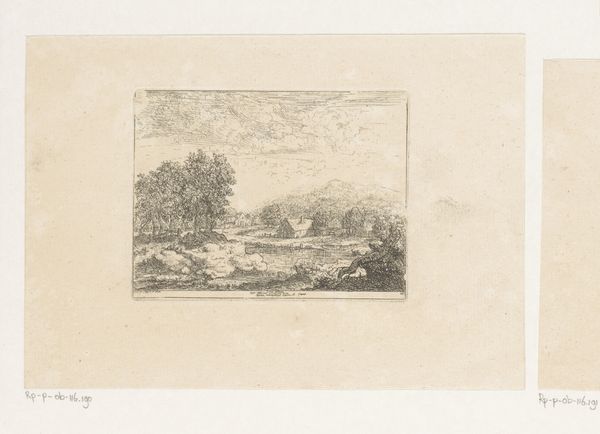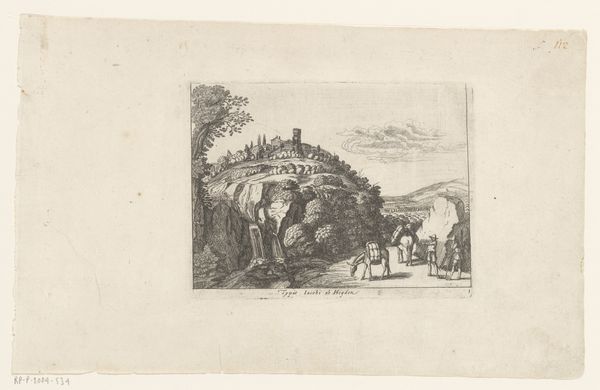
drawing, engraving
#
drawing
#
landscape
#
romanticism
#
cityscape
#
academic-art
#
engraving
Dimensions: height 368 mm, width 295 mm
Copyright: Rijks Museum: Open Domain
Editor: So, this is "Gezicht op een burcht bij een stad" from 1823 by Max Josef Wagenbauer. It's an engraving, and I'm struck by its delicate detail. What do you see when you look at this piece? Curator: I notice immediately the labor involved in producing this intricate engraving. Look at the precision, the way the burin—the engraving tool—would have been used to meticulously create each line. It wasn’t just about representation, it's about the physical act and skill needed to transfer the landscape onto the copper plate, then the print pulled from that plate. The material itself becomes part of the story. How do you think the choice of engraving influenced the artist's vision? Editor: That's a really interesting point about the labor! I hadn't considered how much the medium would dictate the style. I suppose the need for such precise lines makes it look so… deliberate. Does that say something about the relationship to nature itself at the time? Curator: Absolutely. The Romantic era often presented idealized landscapes, but the very act of creating this image through engraving—a process involving industrial materials and skilled craftsmanship—reflects the changing relationship between humanity and nature during the rise of industrialization. The burin and copperplate were tools of burgeoning industry just as much as instruments of art. The artwork therefore straddles nature and progress. How might this piece have functioned within the broader context of art production and consumption in 1823? Editor: Hmm, it could have been reproduced and circulated widely, making art more accessible to a broader public, moving beyond purely commissioned pieces for the wealthy elite. Curator: Precisely! This bridges the gap between “high art” and reproducible imagery, democratizing landscape aesthetics. These prints could enter everyday spaces in ways unique for the time, don't you agree? Editor: Definitely! I’ll definitely be thinking more about the materiality of art-making and consumption going forward! Curator: Wonderful! And I am interested in understanding consumption as an inherent part of artistic labour and choices, something I am very interested in.
Comments
No comments
Be the first to comment and join the conversation on the ultimate creative platform.

